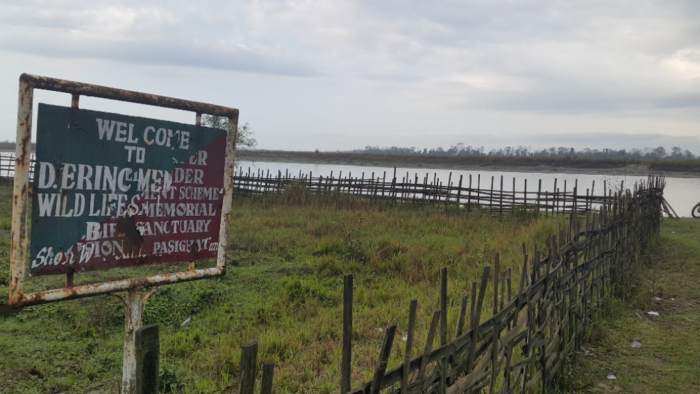
We are passing through a most critical decade of history when mankind’s ability to reduce global warming and keep the global temperature below 1.5°C , that is, pre industrial revolution level will decide the survival of life on the planet, because there is evidence across the world such as sudden melting of glaciers in the Himalayas in Nepal or unusual forest fires in California that this is not taking place . Thus the global temperature might as well cross the threshold sooner than estimated by the Climate scientists at the 2015 Paris Climate talks and approximate 2°c even in this decade unless coordinated action is taken by the world community. The prospect is dreadful as it would mean forest fires, unseasonal floods and cyclones, drought , rising sea levels and submergence of coastal areas , especially cities and centres of industrial and trading across the world. This will be disastrous as about 80% of global GDP is derived from the coastal areas. Sad to note that despite international consensus on this subject, an integrated global action plan to combat and mitigate Climate change has not emerged barring a few measures like carbon trading and investment in electric cars and emphasis on developing renewable sources of energy. And this is seen even in India as a concerted effort is not seen though there is a National Action Plan even when raging forest fires or unseasonal floods in Uttarakhand caused by the reported melting of glaciers in the upper reaches of the Himalayas have caused huge damages and given warning about the future.
Climate change is defined as long term alteration of temperature and typical weather patterns in a place due to human activities like excessive burning of fossil fuel – coal, oil and gas and deforestation defined as putting forest land to ” non forest” use. This suggests that it is the outcome of human action and often by the state ostensibly for” development” meaning building up infrastructures or mining and exploration of oil and gas after felling of trees even when it is known that the trees and their undergrowth in Forests absorb and store carbon dioxide and nitrous oxide and act as carbon sink obstructing warming by ” green house gas effect”. The latter is produced by other activities like increased livestock farming and use of equipments which emit fluorinated gases. Of these man made chemicals ,CFC s, that is, Chlorofluorocarbons, a refregerant gas is most harmful being strong Green House gases that raises global temperature depleting thereby the ozone layer which protects earth from radiation from the sun.
The importance of forest conservation is clear from the scientific assessment that” Amazon forests and biodiversity rich soils store equivalent of four to five years worth of human made carbon emissions of up to 200 gegatons of carbon”.
Since unchecked deforestation is viewed as the major cause of global warming and the fact that Covid 19 , a Zoonotic, disease transmitted to humans from birds and animals forced out of their natural habitat destroyed by deforestation point to the utmost need to conserve forests as the core of the climate resilient strategy.
The focus of this paper is thus on the forests of the north east as 65.05% of the geographical area of the region is under forest cover- the highest in the country and therefore its conservation is critical for climate resilience efforts not only in India but also Bhutan, Bangladesh, East Nepal and Myanmar as well.
It may be useful to look at the uneven distribution of forests in the country keeping in view that India has only 2% of the global forests and only 7.7% area of Bihar, 6.5%of UP and and 3.62% of Haryana are under forest cover. As per the 2019 state of the forest report of Govt of India 21.69% of India is under “forest” and 2.89% under tree cover. The area under forest and tree cover is thus 24.56% which is not improving as 2017 Report indicated increase of only 0.56% of forest cover. Scanning these numbers, one will notice that as per the ” tree canopy density” criteria for defining an area under tree or forest cover which is 10% for tree cover only in a given area ,above 40% for moderately dense and 70% and above for dense forest it is clear that the dense forest cover is falling across the country for the simple reason that such damages are irreversible as ” compensatory afforestation” could never restore the biodiversity of lost forests. At any case even the survival rate of trees planted under this has been very low. .In fact the forest cover within the recorded forest areas has been showing a slight decrease across the country and especially in Assam with a forest cover of 36.11% with 5 National Parks and 18 wildlife sanctuaries.
In this scenario, the forest cover of 7 other states of the region would appear impressive- 85.4% in Mizoram ,79.6% in Arunachal Pradesh and about 75% in the remaining 4 states though one must note their small size and population and the fact that pristine forests in these areas are fast disappearing due to unscientific coal mining and practice of ” jhum”- shifting cultivation as in Meghalaya or in Mizoram, Nagaland and elsewhere. There is no system of monitoring and evaluation of these harmful practices in place within the region though it falls perfectly within the mandate of the North Eastern Council under” regional planning”. Recent incidents of mining/ drilling of oil in Baghjan forest areas in Assam, forest fires and consequent destruction of the forest cover it caused point only to ” poor environmental governance”. The direction of National Green Tribunal to stop illegal ” rat hole coal mining” in Meghalaya by private agencies taking advantage of the protective provisions under the 6th Schedule of the constitution which caused huge destruction of forests and water bodies is another such instance.
In this background it is heartening to note that in Assam there is now a much greater awareness about conservation of forests as the public demand for declaration of Poba Reserve Forest in Jania sub division into a Wildlife sanctuary has strong basis as it is contiguous to Daying Ering Wild Life Sanctuary in Arunachal and Dibru Saikhowa National Park in Upper Assam; and therefore if declared a Sanctuary, the areas will provide an uninterrupted movement of animals essential for conservation of forests, biodiversity and wild life apart from empowering the department with effective powers to conserve forests. Equally critical is the efforts to conserve “Dipor Beel” – a Ramsar site wetland, a migratory bird sanctuary close to Guwahati airport which is subject to rampant encroachment and dumping of solid waste. This must be stopped if only to demonstrate that the Assam govt is serious about conservation. However isolated actions in these areas will not make any difference unless” adaptation to climate change strategy” defined by the IPCC as ” response to actual or expected climatic stimuli and their effects and impacts” is made a part of the development process in which the civil society has a vital role in mobilising public opinion and ground level activities along with the state agencies.
For this ,the NE has to get out of the state or even region centric approach to climate change and look at the bigger Sub regional picture. In its neighborhood Bangladesh ranks 7th in the list of countries most affected by climate change with a forest cover of only 14.47% and that too mostly mangrove forests as the delta is thickly populated with a high crop intensity. The forest cover of West Bengal is also only 19% mainly in Sub Himalayan, mangrove forests and some patches bordering Jharkhand and Odisha and facing severe conservation problems. Sikkim though rich with 47.11% forest cover has seen development of hydro power and Tea plantation which must be contained as its ecology is fragile and integral to Bhutan and East Nepal.
The level of ecological interdependence mentioned above suggest a subregional climate adaptation strategy covering areas which constituted Pre 1912 Bengal Presidency and might as well be a project under BBIN- Bangladesh, Bhutan India and Nepal intiative. The North Eastern Council may be the nodal coordinating agency with the states mentioned as the implementating agencies and the Ministry of External affairs coordinating the program which should cover western Myanmar as well. Since such an approach is in line with the UN view on the subject it should not be difficult to obtain support from the Asian Development Bank or World Bank or any multilateral agency. The unusually heavy and unseasonal rains in this month is evidence of the fact of climate change. It is time to act.
[the_ad id=”41101″]


















